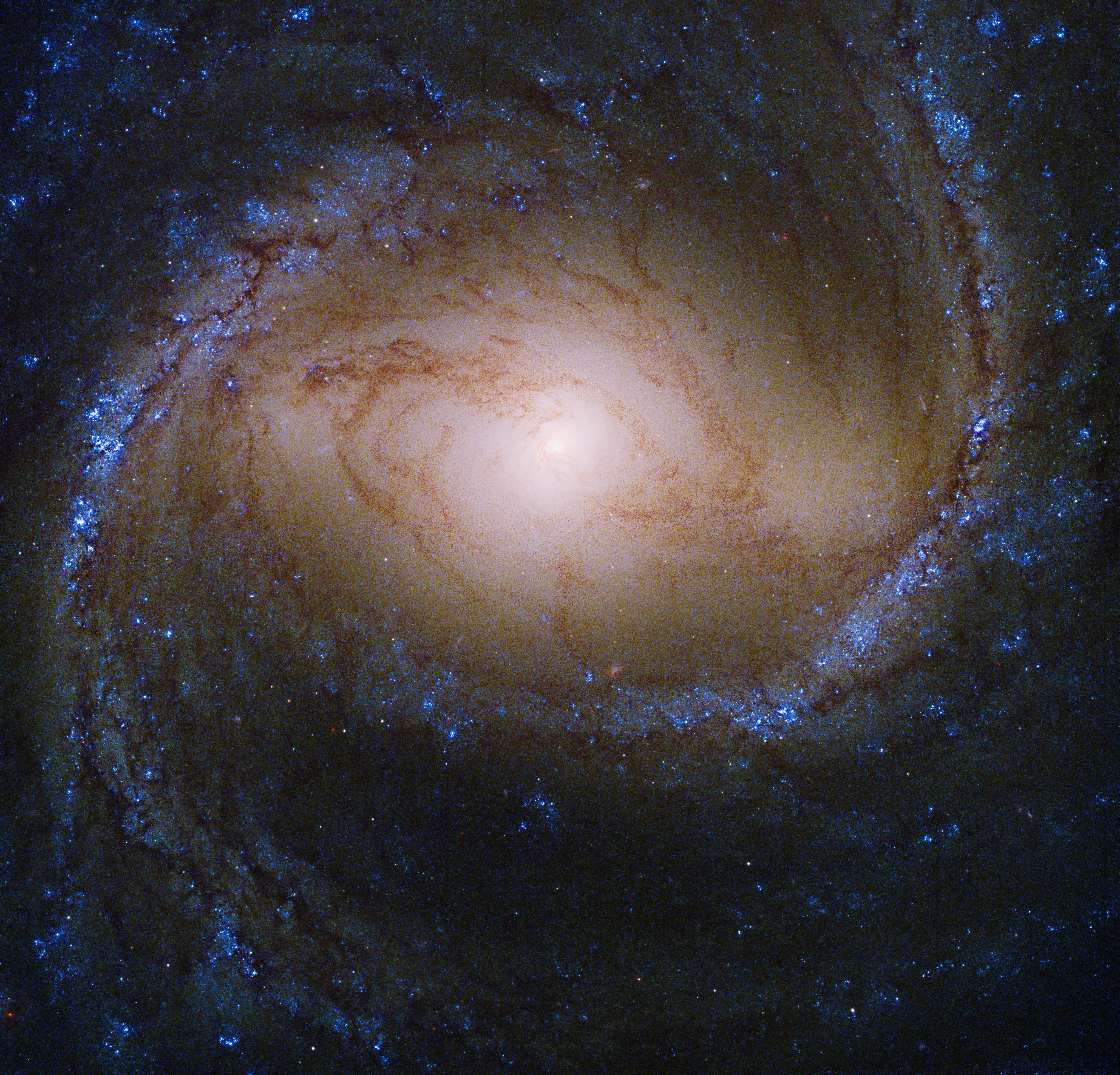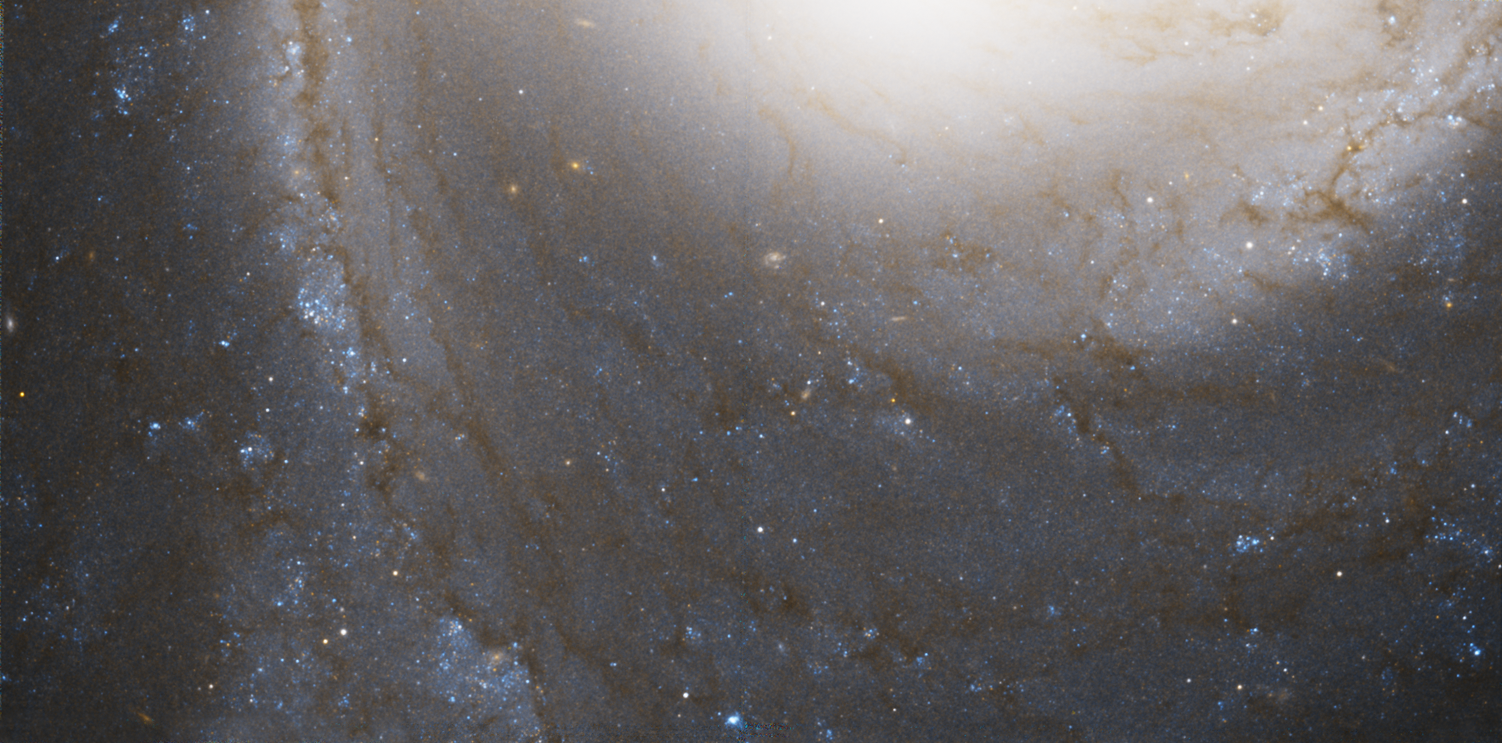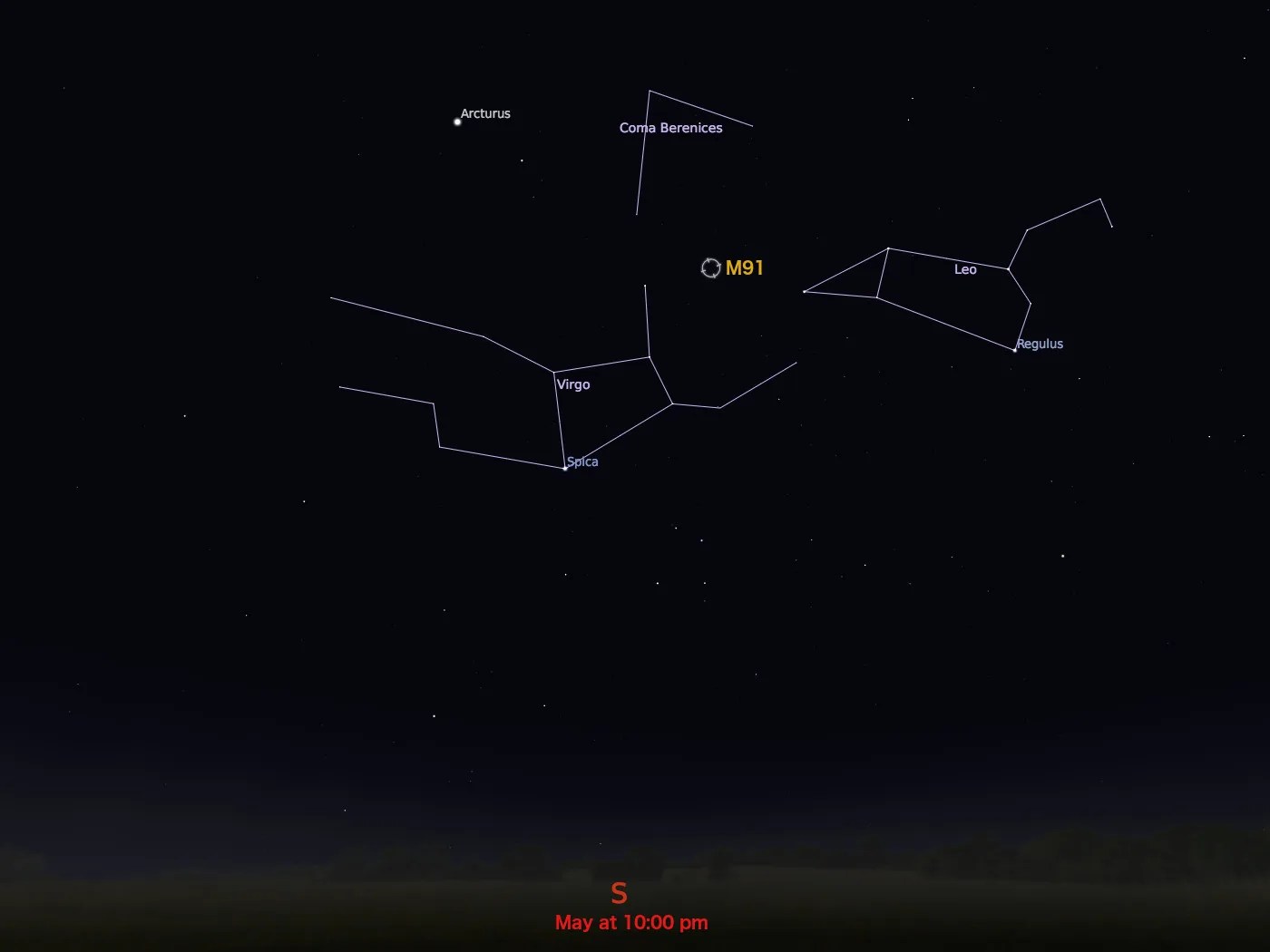Messier 91
Messier 91 is one of the faintest objects in Messier’s catalog.
Distance
60 million light-years
Apparent Magnitude
11.0
constellation
Coma Berenices
object type
Spiral Galaxy

The spiral galaxy M91 was discovered by Charles Messier in 1781. It was the last of the nine objects (M84–M92) that Messier added to his catalog on a single night in March. Located 60 million light-years from Earth with an apparent magnitude of only 11, M91 is one of the faintest objects in Messier’s catalog. In a dark sky, the galaxy can be spotted with medium-sized telescopes in the constellation Coma Berenices most easily during May.

M91 is one of over a thousand galaxies that make up the Virgo cluster — a group of galaxies that are gravitationally bound to one another. It is an anemic galaxy, meaning that it has a lower rate of star formation compared to other spiral galaxies.
This image of M91 combines ultraviolet, visible, and infrared wavelengths. It was taken by Hubble’s Wide Field Camera 3 as part of an effort to explore the connections between young stars and cold gas in a variety of nearby galaxies.
For more information about Hubble’s observations of M91, see:

Explore Hubble's Messier Catalog
The following pages contain some of Hubble’s best images of Messier objects.

Messier 1 (The Crab Nebula)
Better known as the Crab Nebula, Charles Messier originally mistook Messier 1 for Halley’s Comet, which inspired him to create…

Messier 2
Hubble's image of Messier 2 is comprised of visible and infrared wavelengths of light.

Messier 3
Messier 3 holds more than 500,000 stars.




